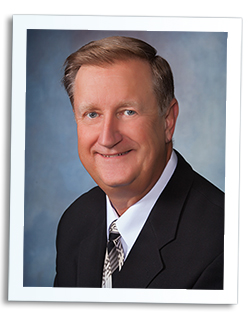To process your support calls and e-mail requests in a timely manner, we need your company account phone number. This helps us know what products and support level you have enrolled in. Please give your company account phone number to those who may be working with your system – your IT person, accountant, etc.

As I write this article for our monthly newsletter, I am watching TV and found out this new tax bill that just passed will make everyone so successful we will all have our own personal jet airplane. Oh, wait … I just changed the channel and found out this is the worst thing that could possibly happen to all of mankind, and as soon as I finish writing, I’m heading out to stock up on food and water since the world will certainly end. Whew, I’m thankful the “Power” button still works to turn this noise off.
Sarcasm aside (which is not easy for me), the changes in the new tax law will have a different effect on each of us. It is vitally important to understand our individual financial position, and how the changes affect us personally. This means having a firm grasp on our business, and the changes we may need to make in reaction to the new rules. I heard one “expert” say they prepaid as much of their real estate taxes for next year as they could, and the very next “expert” say not only is that a bad idea, you can’t legally do that. Since neither of these people know my personal situation, I think I’ll ignore their advice.
At the risk of repeating myself from earlier articles, here’s where the importance of working with trusted advisors pays off. These professionals know your business and will be able to guide you through the maze of changes.
You can count on us at Red Wing Software to keep you up-to-date on payroll tax tables, depreciation calculations, and any other changes that need to be made in our software, as the rules are solidified. Unfortunately, this may mean more frequent releases of new versions of our software so we can ensure you have the most current information. We are also expecting a higher than normal load on our Support Team, and will do the best we can to provide the service that you’ve come to expect from us. We will do everything in our power to help keep you informed with as little disruption to your operation as possible.
Thank you for your continued support, and have a happy and prosperous New Year.
We are pleased to offer our Red Wing Software customers an opportunity to learn more about W-2 and Affordable Care Act (ACA) year-end tax forms via pre-recorded sessions in our online Virtual Classroom. These sessions were recorded by one of our CenterPoint experts and provide you with in-depth information and explanations about the year-end tax forms from any location where you can access the internet (high-speed internet connection recommended).
You can view the pre-recorded year-end tax form sessions and session materials from the links below. Under Course Materials (on the lower-left side of the page), first view the session guide and then view the video.
W-2 Forms for CenterPoint Payroll
January 2018
Price: Free
ACA Forms for CenterPoint Payroll
January 2018
Price: Free
Greden’s Ponderosa Dairy featured in Dairy Star Magazine
Greden’s Ponderosa Dairy was featured in the October 14, 2017 issue of Dairy Star Magazine, in the story: On-Farm Practices Affects Beef Quality. The story discusses Greden’s management practices and training for their 550-cow dairy in Altura, Minnesota.
Sunburst Dairy Featured in Progressive Dairyman
Sunburst Dairy was featured in the October 19, 2017 issue of Progressive Dairyman, in the story: Three Farms Tackle Family Transition in Different Ways. Yogi Brown of Sunburst Dairy gave their story of transition on the farm.